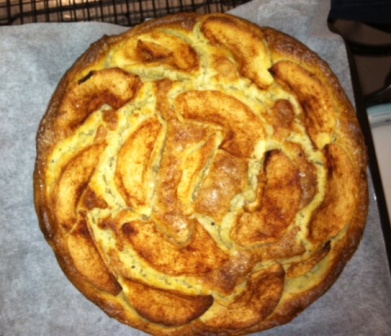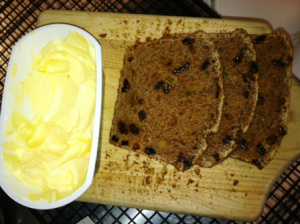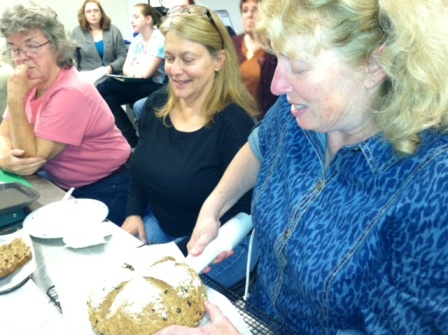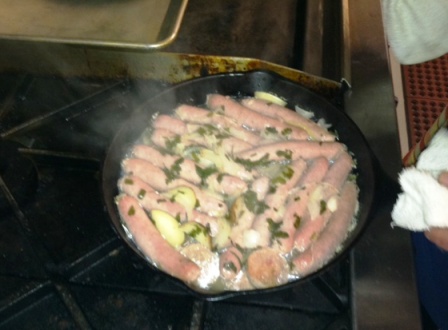Welcome back. The quest continues. Is there a true Irish Cuisine or is it simply imagined? Do native Irish and those of Irish descent believe there is an Irish cuisine? Is it even worth discussing? There are some critics, and food historians who believe the answer is a resounding no. And, as usual, there are other food historians, who, based on an acceptable definition of cuisine (one being, a style or method of cooking generated from a country, region or an establishment) believe the culinary/food traditions of Ireland are coherent and distinctive. At least one thing is certain; the thought of calling Irish food a cuisine is still somewhat difficult and confusing to the general public. When compared with the great cuisines of the world (French, Italian, and Asian, to name a few) it doesn’t compute.
In The Oxford Companion to Food, Hasia Diner suggests “the Irish attitude toward food seemed to have been very different from that of other ethnic groups who, at various times, did not give up their food monoculture, despite being beset by poverty and starvation or both during and after hard times. The Irish, on the other hand, did not relish pre-trauma food memories, nor did they take the one powerful food they had and transform it into a group identity.” We know historically of the dominance of the Irish people by Vikings, Normans, English, and the Ascendancy, the brutal, ruling, upper-class Ango-Irish Protestant minority in the 18th century. This contributed to deep poverty and starvation of the native Irish. Add to this historical significance of the Great Famine of 1845, the forces leading to the 1916 uprising, British domination for centuries politically, culturally, and economically, and finally being annexed to the United Kingdom in 1800 for 12 decades, all contribute to an understanding of the impact on Irish food. One can only conclude, as I believe Diner has, that the native Irish had more important issues that challenged them than a coherent and distinctive cuisine.
Over the past forty plus years, I have accumulated a little over one hundred Irish cookbooks. I have studied them well and continue to do so. It is now abundantly clear to me that the origin of most Irish dishes is British in nature. Myrtle Allen, the Julia Child of Ireland and founder of the Ballymaloe Cookery School, admits and credits her inspiration for much of her food to famous Chef and cookbook author, Elizabeth David of England. Both of these outstanding chefs acknowledge that Ireland can be proud and boast about its national dishes that are inherently Irish: Dublin Coddle, boxty, bram brack, porter cake, soda bread, yellow man, Irish stew, potato colcannon & champ. However, being Irish to the “teeth”, more Irish than the Irish, is not enough.
So, what is the answer to the question is there an Irish Cuisine? I believe it is evolving and emerging. It is being reinvented, using the incredible native Irish foods present for centuries, and a new generation of Irish Chefs inspired not only by their traditional and ancestral dishes, but by the inspirational European and American culinary scene. Proving this is easy. There are websites that proudly present the culinary world of Ireland today. Take a moment and access RTE Radio1, www.rte.ie/radio1. This is the national radio and television network of Ireland. When you navigate the website, to the far right is the word More. That will give you a menu that lists many choices such as food. Food is what you want. Chef Kevin Dundon’s modern Irish food will inspire you, giving you a better idea regarding modern Irish Cuisine.
Food for thought for cooking Irish! When the Irish shop their supermarket, they shop for basically the same products as we and the British do. Most of our products are made here in the US; most of their products are produced in Ireland and England. They purchase fresh vegetables, cookies, crackers, jams, jellies, piccalilli, Irish mustard, white and black puddings, bangers (sausage), onions, oatmeal, Odlums flour, Kerrygold butter, soda breads, porter cakes, tea bracks; they have meat display cases featuring fresh butchered beef, lamb, pork, many types of fowl. I know of such things because I have been to Ireland many times and have wandered through many of Irish markets and have seen these food items. And the reason I travel to the Bronx to buy Irish products at Prime Cuts Market in the Woodlawn area of the Bronx, is because our American supermarkets, in general, do not carry Irish products. Yes, they carry Irish cheese, McCann’s Oatmeal cereal and Kerrygold butter. The thing we have to consider is what section of our supermarkets actually carries a line of Irish food stuffs? When you and I go to Hannaford’s, Price Chopper, or our favorite supermarket, we are very aware of the ethnic section carrying Asian, Italian, Mexican, and Jewish kosher, meats, poultry, fish and dry goods. Notice any Irish section lately.…?!
Nollaig Shona Duit
Harold Qualters
A Christmas Dessert
I came across this recipe, which is a play on Irish coffee, from an Australian cook, Darren Purchese.
- About 6 hours before serving, soften your favorite ice cream (mine is French vanilla) and scoop a portion into individual (rock) glasses. Cover and return to the freezer.
- Brew a large pot of coffee.
- Place the filled rock glass in front of each person. Very dramatic!
- Pour a shot of Baileys on top of the ice cream.
- Top with the hot coffee. Hot chocolate works in place of coffee.
- Eat immediately with great joy!






